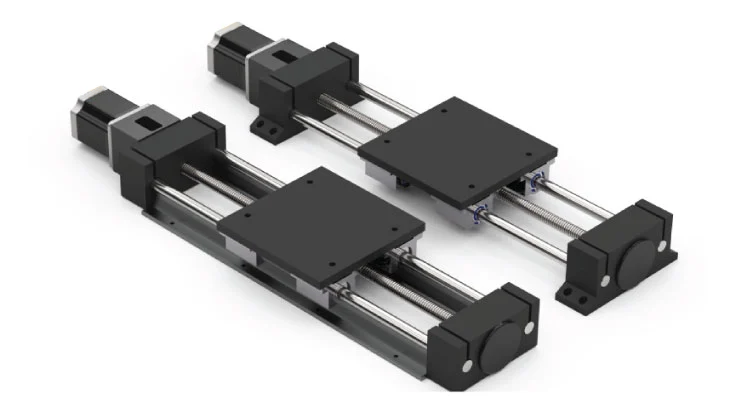How to Effectively Choose a Linear Guide System for Your Application

Linear Slide Systems are perhaps the most diverse group of products in the motion control industry.
Available in numerous configurations with widely varying performance characteristics, selecting the right linear slide system for your application can be challenging. One of the essential characteristics to consider is guide rail performance -- primarily based on speed, load-carrying capacity, and moment load limitations. Load limits for linear guide systems depend on the orientation of the slide and the position of the mass being moved. Therefore, carefully consider whether the system will consist of a single axis, or will require multiple axes, such as in a stage or gantry system.
Space constraints can be another determining factor in the selection process. For example, base size, cross-section, and stroke length ratio compared to the overall length of the system will help narrow down the appropriate choices. Other characteristics to consider in system selection are cost, smoothness of operation, noise, and preference or familiarity of the guide rail system to the designer.
How to Choose the Best Linear Guide System?
There is certainly overlap in both cost and performance characteristics of the linear guide systems offered. In these cases, the ability to customize the system for OEM designs can help define which option to choose as the foundation for your project. Environmental concerns can also be a deciding factor. Consider requirements such as dust/dirt vs. cleanroom compliant options, high or low-temperature requirements, and if industrial strength or materials for food-grade applications are necessary. These conditions will significantly impact the system design and influence decisions such as using lead screws vs. ball screws, whether incorporated materials need specific chemical resistivity or low out-gassing properties.
Choosing a linear slide system supplier should also factor into your system design decision. For example, some manufacturing partners provide high-level assembly capabilities and offer testing services before shipping. As a result, they provide a turnkey solution that works right out of the box, helping you reduce assembly time, eliminate alignment issues, and save valuable time and money.
System designers should also consult with the manufacturer's application engineering team to assist in making optimized selections based on your specific application requirements. For additional assistance with linear guide system design and selection, please visit contact us.


